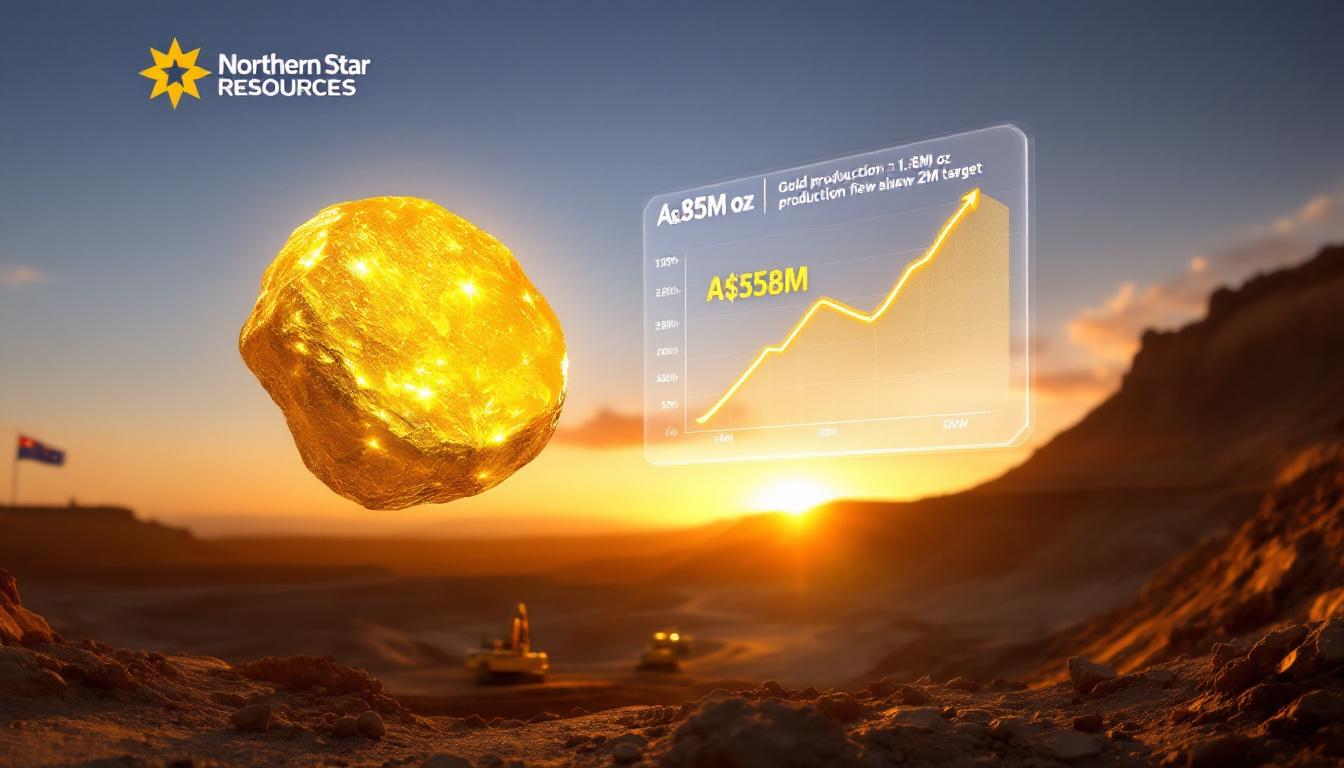Understanding the Strategic Landscape of Mining Acquisitions: Metals Acquisition and Harmony Gold Mining
In a major development reshaping the global copper mining landscape, Harmony Gold Mining has announced a landmark US$1 billion bid to acquire Metals Acquisition Corp (MAC), signaling a strategic pivot toward critical minerals essential for the green energy transition. This acquisition represents one of the most significant mining transactions of 2025, with far-reaching implications for both companies and the broader resources sector.
The Rise of Metals Acquisition Corp
Founded as a Special Purpose Acquisition Company (SPAC) on the New York Stock Exchange in 2021, Metals Acquisition Corp emerged with substantial backing from seasoned mining executives including Bill Beament (former Northern Star Resources) and Nev Power (ex-Fortescue Metals Group). The company followed an unconventional path to mining prominence, utilizing the SPAC structure to raise capital specifically targeted at acquiring producing mining assets.
In February 2024, MAC completed a dual listing on the Australian Securities Exchange (ASX), standing out as one of the few large-scale market debuts exceeding the $1 billion valuation threshold in recent years. This listing provided Australian investors direct access to the company's flagship asset and created additional liquidity for the stock.
The CSA Copper Mine: A Premium Australian Asset
The cornerstone of MAC's value proposition is the historic Cornish, Scottish and Australian (CSA) copper mine, which the company acquired from global mining giant Glencore in June 2023 for approximately US$730 million. Located 11 kilometers northwest of Cobar in New South Wales, Australia, this underground operation has been a consistent producer of high-grade copper for nearly six decades.
"The CSA mine represents one of Australia's highest-grade copper operations, with mineralization characteristics that are increasingly rare in the global mining landscape," notes mining analyst Dr. Sarah Chen. "Such high-grade deposits are particularly valuable in an era of rising operational costs and environmental scrutiny."
What makes CSA particularly attractive is its exceptional copper grades, averaging 3.9% copper in production—substantially higher than the global average grade of approximately 0.6%. This grade advantage translates to lower processing costs per tonne of final copper produced and reduced environmental footprint compared to lower-grade operations.
Production Excellence and Resource Expansion
Under Metals Acquisition's management, the CSA mine has achieved remarkable operational improvements:
- Record production: 41,128 tonnes of copper at 3.9% grade in 2024
- Forward guidance: 43,000-48,000 tonnes for 2025 and 48,000-53,000 tonnes for 2026
- Mine life extension: April 2024 resource update extended operations from 2029 to 2034
- Resource quality: Current resource of 8 million tonnes at 5.2% copper (containing 413,000 tonnes of copper)
- Resource confidence: 4.7 million tonnes at 4.9% copper (229,000 tonnes) classified in the higher-confidence Measured and Indicated categories
These achievements highlight the management team's ability to enhance value through operational excellence rather than solely relying on favorable commodity prices—a key attribute that attracted Harmony Gold's interest.
CEO Mick McMullen has been instrumental in implementing efficiency improvements at the operation, stating: "The transaction is a strong endorsement of the hard work our team has invested in transforming the asset into the high-quality operation it is today."
Why is Harmony Gold Mining Pursuing Metals Acquisition?
Harmony Gold Mining, dual-listed on the NYSE and Johannesburg Stock Exchange, stands as South Africa's largest gold producer with a portfolio of assets primarily concentrated in its home country. The company's $1 billion offer for Metals Acquisition represents a significant strategic pivot.
The Acquisition Structure
The transaction has received unanimous backing from MAC's board of directors, with major shareholders indicating strong support. Key elements include:
- Full acquisition: 100% purchase of Metals Acquisition Corp
- Transaction value: Approximately US$1 billion enterprise value
- Shareholder approval: Vote expected by the end of 2024
- Regulatory hurdles: Australian Foreign Investment Review Board approval required
Strategic Rationale Behind the Move
Harmony's pursuit of Metals Acquisition aligns with several key strategic objectives:
- Commodity diversification: Reduces reliance on gold (which currently accounts for approximately 83% of Harmony's revenue) by adding copper exposure
- Geographical diversification: Establishes presence in Australia—ranked 6th globally in mining investment attractiveness according to the Fraser Institute's 2024 survey
- Portfolio quality improvement: Acquires a high-grade, long-life asset with established infrastructure
- Exposure to energy transition materials: Positions the company in the copper market ahead of anticipated supply shortfalls
"This acquisition represents Harmony's strategic entry into copper at a time when the fundamentals for this critical metal are exceptionally strong," commented mining sector analyst James Robertson. "They're essentially buying a seat at the table for the energy transition metals boom."
Industry Precedent and Timing
Harmony's move follows a broader trend of gold producers diversifying into copper, exemplified by Newmont's $16.8 billion acquisition of Newcrest Mining in 2023. The timing of Harmony's bid suggests the company sees value in securing copper exposure before potential price increases make acquisitions prohibitively expensive.
What Factors Are Driving Copper Demand and Mining Consolidation?
The global copper market is experiencing profound structural changes driven by multiple concurrent forces, creating both challenges and opportunities for producers and investors.
The Energy Transition's Copper Intensity
Copper stands at the center of the global energy transition due to its unique properties:
- Electrical conductivity: Copper offers the optimal balance of conductivity, cost, and availability
- Thermal properties: Superior heat dissipation crucial for electric motors and charging infrastructure
- Corrosion resistance: Long service life in outdoor applications like solar arrays and transmission systems
- Intensity of use: Electric vehicles require 4x more copper than internal combustion vehicles (75kg vs. 20kg)
These attributes make copper irreplaceable in key green technologies:
| Technology | Copper Intensity | Growth Projection (2025-2035) |
|---|---|---|
| Solar Power | 5.5 tonnes/MW | +215% capacity addition |
| Offshore Wind | 8.0 tonnes/MW | +300% capacity addition |
| Electric Vehicles | 75kg per vehicle | +450% unit sales |
| Grid Storage | 1.4 tonnes/MWh | +520% capacity addition |
Supply-Demand Imbalance
The copper market faces a significant structural deficit emerging over the coming decade:
- Supply constraints: Few major new mines under development
- Grade decline: Average copper grades falling ~0.15% per decade
- Project timelines: 15-20 years from discovery to production for new mines
- Investment gap: CRU Group forecasts a 4.7 million tonne deficit by 2030
BlackRock's mining sector specialist Olivia Markham highlighted this challenge, stating that copper prices would need to reach approximately $12,000 per tonne to make new mine development economically viable—significantly above current copper price insights levels.
Chinese Demand Evolution
China has historically dominated global copper consumption, accounting for approximately 55% of refined copper demand. However, the landscape is shifting:
- Demographic headwinds: Aging population and slowing urbanization
- Economic rebalancing: Shift from infrastructure-led growth to consumption-led model
- Maturing economy: Reserve Bank of Australia analysts suggest Chinese commodity demand may have peaked
- Emerging markets: India and Southeast Asia expected to drive next wave of copper demand growth
"While Chinese demand growth is moderating, the global energy transition is creating an entirely new demand vector that more than compensates for this shift," explains commodities strategist Michael Chen. "We're essentially witnessing a handoff from construction-driven demand to energy transition-driven demand."
Industry Consolidation Trend
Major mining companies are increasingly pursuing acquisitions rather than developing new projects:
- BHP's $49 billion bid for Anglo American in April 2024
- Rio Tinto's acquisition of Turquoise Hill Resources to gain control of Oyu Tolgoi
- Glencore's pursuit of Teck Resources' coal assets
This consolidation trend reflects several industry consolidation trends:
- Risk mitigation: Acquiring producing assets eliminates development risk
- Time advantage: Immediately accretive to production vs. decade-long development
- ESG considerations: Lower environmental impact than new mine development
- Premium valuation: Companies willing to pay premiums for operating assets in stable jurisdictions
How Does This Acquisition Reflect Broader Mining Industry Strategies?
The Harmony-MAC transaction exemplifies several key strategic trends reshaping the mining sector's approach to growth and value creation.
M&A vs. Exploration Strategy
The global mining industry has undergone a significant strategic shift, with 65% of mining CEOs now prioritizing acquisitions over greenfield exploration according to PwC's 2024 Mining Report. This preference stems from several compelling factors:
- Risk profile: Acquiring existing operations provides certainty around geology, metallurgy, and permitting
- Time horizon: Operating assets deliver immediate cash flow versus 7-10 year development timelines
- Capital efficiency: Lower cost overrun risk compared to greenfield construction
- Shareholder alignment: More predictable returns align with investor preferences for dividends
The Metals Acquisition story itself demonstrates the full lifecycle of this strategy:
- Stage 1: SPAC formation with experienced mining executive leadership
- Stage 2: Strategic acquisition of an undervalued but quality operating asset
- Stage 3: Implementation of operational improvements and resource expansion
- Stage 4: Value realization through sale to a major mining company
"This cycle—from capital raising to value creation to monetization—represents the new paradigm in mining development," notes mining finance expert William Drake. "Rather than the traditional junior explorer to producer evolution, we're seeing specialized teams acquire, optimize, and divest assets in much shorter timeframes."
The Premium for Operating Assets
The acquisition of operating mines commands significant premiums in today's market, reflecting several key advantages:
- De-risked geology: Proven reserves and production history
- Established infrastructure: Processing facilities, power, water, and transportation
- Workforce in place: Skilled labor force already trained and productive
- Regulatory certainty: Permits secured and relationships established
- Cash flow generation: Immediate revenue versus years of capital outflow
MAC's ability to reduce debt-to-equity from 1.2x to 0.7x post-Glencore acquisition while simultaneously increasing production guidance by 15% exemplifies how operational improvements can substantially enhance asset value.
Future Growth Potential
Despite its long operational history, the CSA mine offers considerable upside potential:
- Limited regional exploration: Minimal testing away from known deposits
- Depth potential: Mineralization remains open at depth
- Modernization opportunities: Further automation and digitalization initiatives
- Regional consolidation: Proximity to complementary operations like Aurelia Metals' assets
Had Harmony not made its bid, industry analysts speculated that MAC might have pursued its own acquisition strategy, potentially targeting neighboring operations in the Cobar Basin to create operational synergies and extend the overall mine life.
What Are the Implications for Copper's Role in the Global Economy?
The Harmony-MAC transaction highlights copper's evolving position in the global economy and resource hierarchy.
Copper's Critical Role in Energy Transition
Copper has emerged as perhaps the most critical metal for global decarbonization efforts:
- Renewable energy: Essential for solar, wind, hydro, and geothermal power generation
- Electrification: Fundamental to transmission infrastructure and building electrification
- Transportation: Critical for EVs, charging infrastructure, and electrified public transit
- Energy efficiency: Key component in efficient motors, transformers, and HVAC systems
International Energy Agency modeling suggests that achieving net-zero scenarios would require copper production to reach 60 million tonnes annually by 2050—more than double current production levels.
Supply Constraints and Innovation
The growing gap between projected demand and supply capacity is driving several responses:
- Price signals: London Metal Exchange copper futures have seen record investor positioning, with net-long positions reaching 120,000 contracts in May 2025
- Substitution efforts: Research into aluminum alternatives for some applications
- Recycling expansion: Increasing copper recovery rates from 30% to target 50+%
- Mining innovation: Development of new extraction technologies for lower-grade deposits
"The copper supply challenge represents both a potential bottleneck for the energy transition and a tremendous opportunity for innovative producers," notes mining technology researcher Dr. Elena Petrov. "We're likely to see accelerated deployment of technologies like in-situ leaching and advanced sorting to unlock previously uneconomic resources."
National Security Implications
Governments increasingly view copper access as a strategic imperative:
- Critical mineral designations: Added to strategic lists in the US, EU, and Australia
- Supply chain reshoring: Efforts to rebuild domestic processing capacity
- Strategic stockpiling: Several nations building copper reserves
- Mining-friendly policy revisions: Streamlined permitting in traditionally restrictive jurisdictions
These developments suggest copper's geopolitical importance will continue to grow, potentially rivaling that of oil in the 20th century as Goldman Sachs famously declared: "Copper is the new oil."
FAQ: Key Questions About the Metals Acquisition Deal
What makes the CSA mine valuable as an acquisition target?
The CSA mine stands among Australia's highest-grade copper operations, with New South Wales ranked in the top 10 mining jurisdictions globally according to the Fraser Institute. The mine produces approximately 40,000+ tonnes of copper annually at grades approaching 4%—significantly above the global average. Its recent resource update extended mine life to 2034, providing a decade of production visibility in a stable regulatory environment.
How does this acquisition align with global copper market trends?
This acquisition perfectly reflects the growing recognition of copper's strategic importance in the energy transition. Major miners are securing quality copper assets through M&A rather than developing new mines due to the significant time and cost advantages. With analysts projecting a 4.7 million tonne supply deficit by 2030, companies with producing assets are commanding premium valuations.
What operational improvements did Metals Acquisition implement at CSA?
Since acquiring the mine from Glencore in 2023, Metals Acquisition implemented several key improvements:
- Reduced all-in sustaining costs by approximately 12%
- Expanded drilling programs to extend mine life by 5 years
- Optimized the mining sequence to target higher-grade zones
- Implemented advanced digitalization initiatives for real-time production monitoring
- Refinanced the acquisition debt to improve balance sheet flexibility
These improvements align with broader industry evolution trends and transformed the asset's value proposition, creating the conditions for the premium valuation offered by Harmony.
What does this transaction indicate about mining investment strategies?
The transaction demonstrates the effectiveness of the acquire-improve-sell strategy in mining. It also reveals major miners' growing preference for securing operational assets in stable jurisdictions rather than developing new projects, even at significant premiums. The success of MAC's approach—delivering approximately 37% returns to early investors in just over two years—suggests this model will likely be replicated by other mining investment vehicles targeting assets poised to benefit from surging copper demand.
Disclaimer: This analysis contains forward-looking statements about copper markets, mining assets, and corporate strategies. Actual outcomes may differ materially from projections. Investors should conduct their own due diligence before making investment decisions based on this information.
Want to Be Ahead of the Next Major Mining Discovery?
Discover how breakthrough mineral finds like those discussed can generate substantial returns by exploring Discovery Alert's dedicated discoveries page, where our proprietary Discovery IQ model delivers real-time alerts on significant ASX mineral announcements, giving you a crucial market advantage.




